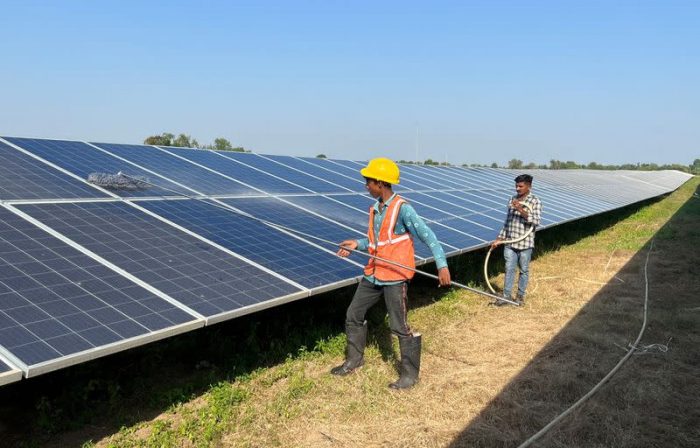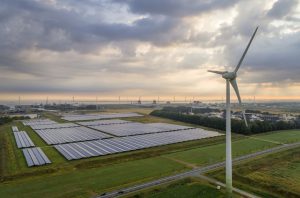India added a record 13.7 gigawatts of power in the first quarter of 2024, with renewables accounting for 71.5% of the new additional capacity, according to the Institute of Energy Economics and Financial Analysis (IEEFA).
Most of the additional capacity from January to March was solar (62.1%) and wind (8.4%), the IEEFA said in its latest POWERup report, adding that these additions brought the country’s total power generation capacity to nearly 442 gigawatts (GW) by the end of March.
India installed a record solar capacity of 8.5 GW in the first quarter, when many projects came online, including a 1.6 GW project by Adani at Khavda in western Gujarat state.
ALSO SEE: Chinese Firms Close in on High-End AI Memory Chips Coup
India also boosted its nuclear power capacity with the commissioning of Unit 4 (700 MW) of the Kakrapar Atomic Power project in Gujarat on March 31, the agency said. That facility is run by Nuclear Power Corporation of India Ltd (NPCIL).
Meanwhile, India – like China – is still expanding its coal power production. It also added some 3,193 megawatts at five different power plants in Jharkhand, Tamil Nadu, Uttar Pradesh (2 sites) and Telangana during the first quarter.
IEEFA said that the additional coal power production was “one of the highest in recent quarters”. It took the total installed base of coal power to close to 218 GW, or 49.2% of India’s total power generation capacity.
Even with the coal capacity additions, the increasing number of renewable power installations over recent years has meant that the coal sector’s share of total power capacity “dropped under 50% for the first time,” IEEFA said.
This is well ahead of the Indian government’s target of 50% cumulative power generation capacity from non-fossil fuel sources by 2030, it noted.
India is likely to boost its power generation capacity from all sources until it meets its growing electricity demand, the agency said.
G7 nations to exit coal by 2035
The decline of coal’s share in the power sector is occurring in countries all around the world.
Energy ministers of the Group of Seven (G7) leading industrialized nations agreed in April to phase out all unabated coal power generation by 2035 to speed up the transition to clean renewable sources.
But India is now seen as making bigger strides towards the goal of net-zero greenhouse gas emissions.
In 2023 it became the world’s third largest generator of solar energy, behind only China and the US, according to Ember’s Global Electricity Review released early this month.
In 2023 coal was still the dominant source of power, generating over 70%, while solar generated close to 6%. The latter figure is impacted by adverse weather conditions in some parts of the country, but likely to rise rapidly once new projects are linked to national grids.
Tenders for a record 69 gigawatts of renewable energy have been issued across the country for the 2024 fiscal year, which is above the Modi government’s target (50 GW), IEEFA said.
“After a slump from 2019 to 2022 due to supply-chain issues and global price spikes brought on by the Covid-19 pandemic and Russia’s invasion of Ukraine, the market has rebounded and gone from strength to strength,” Vibhuti Garg, IEEFA director for South Asia, said.
“There is strong investor interest in the Indian utility-scale renewable energy market. The primary reasons are the large-scale potential for market growth, central government support in terms of targets and regulatory frameworks, and higher operating margins.”
Solar was the world’s fastest-growing electricity source for the 19th straight year in 2023, adding more than twice as much new electricity as coal last year.
Three-quarters of the world’s solar power growth is occurring in China, the US, Brazil and India, the IEEFA said.
- Jim Pollard
ALSO SEE:
China’s Solar Sector Seen Facing Years of Oversupply, Low Prices
China’s Cheap Solar Panels Killing Europe’s Solar Manufacturers
China Wind, Solar Capacity Set to Outstrip Coal For First Time
China Solar Panel Costs Plunge in 2023, 60% Cheaper Than US
EU May Also Probe China Subsidies for Wind Turbines – FT
China to ‘Dominate’ Global Solar Supply Chain For Next Decade
Oil Producers, Carmakers Knew of Climate Risk in 1954 – Guardian
























